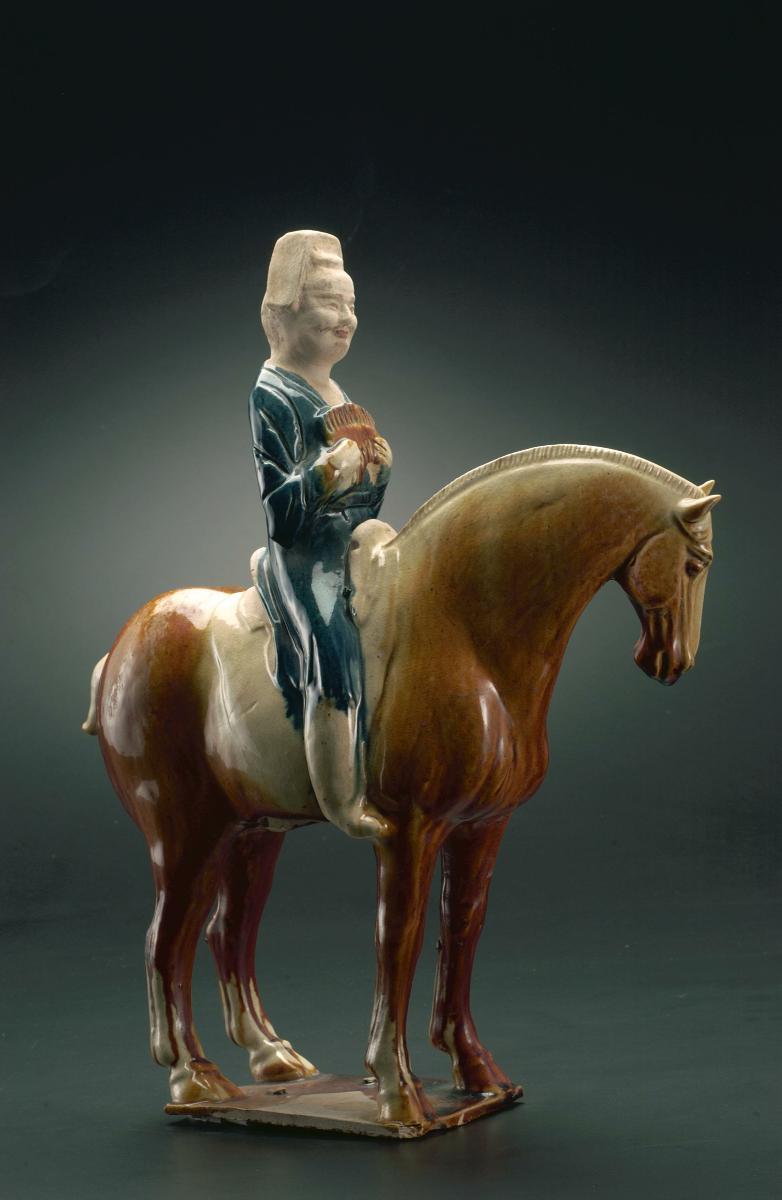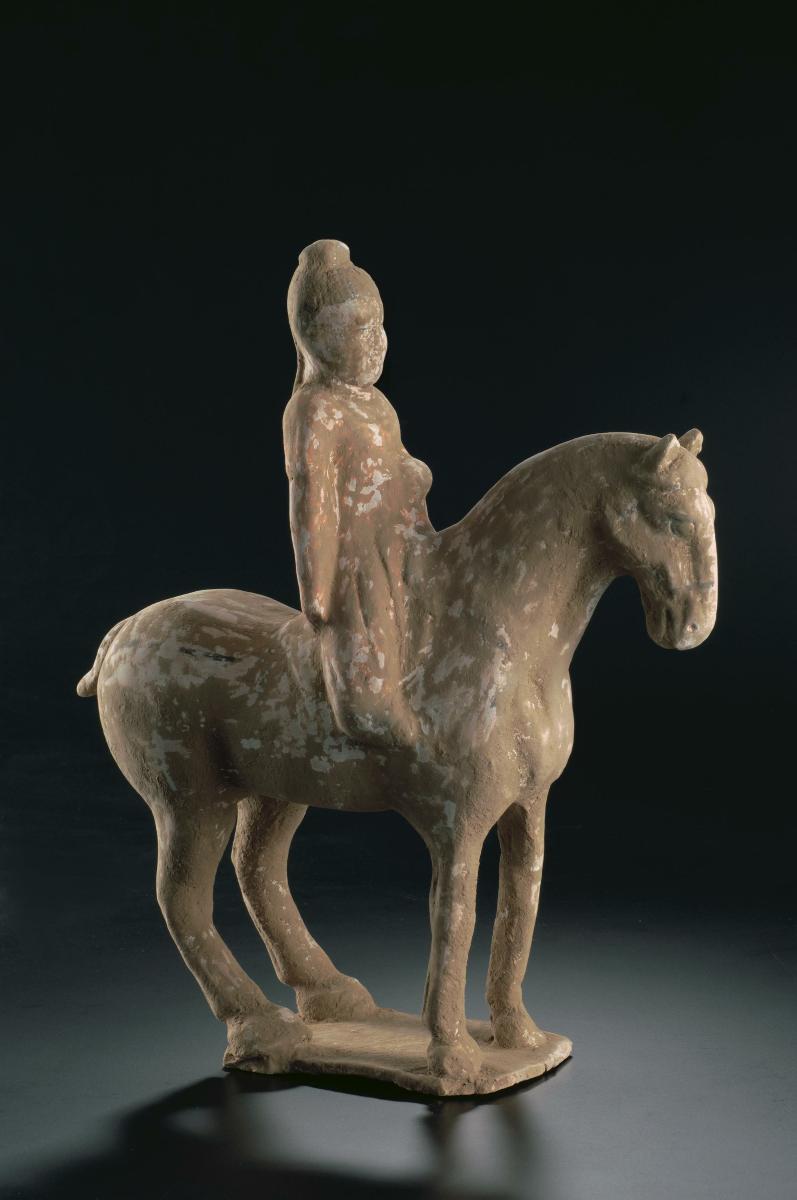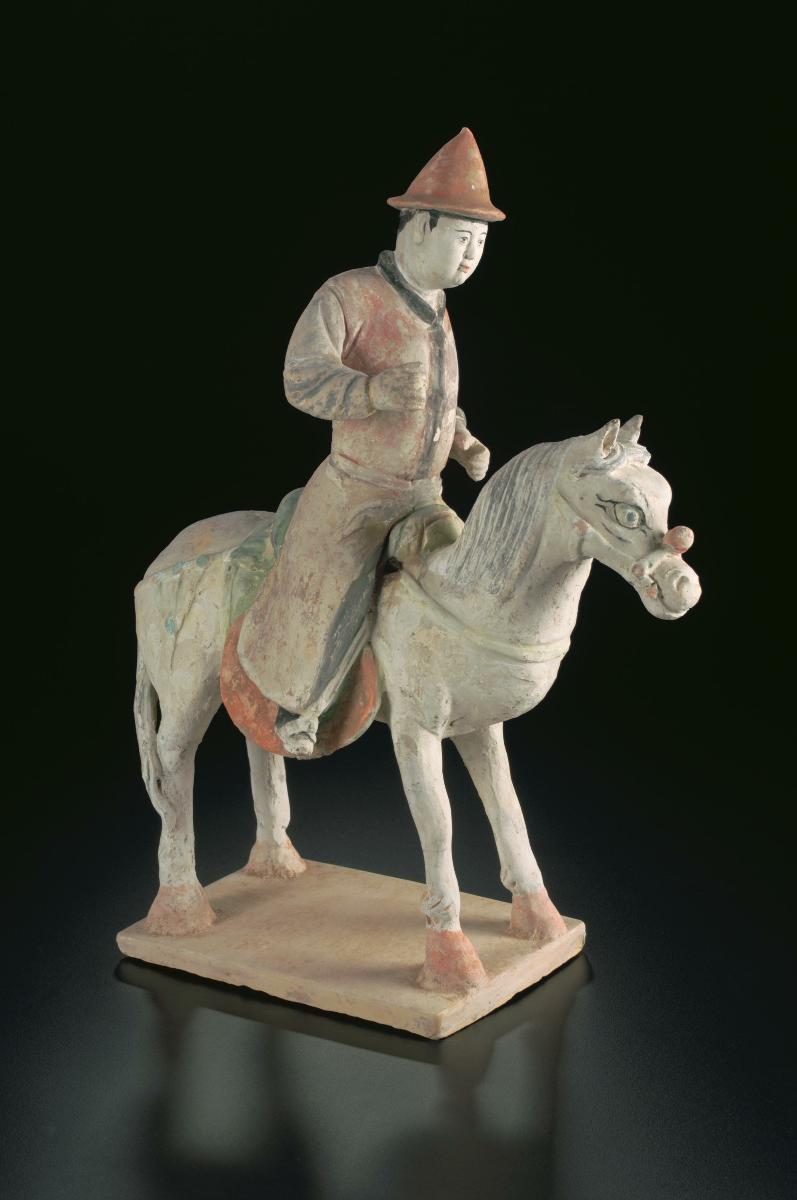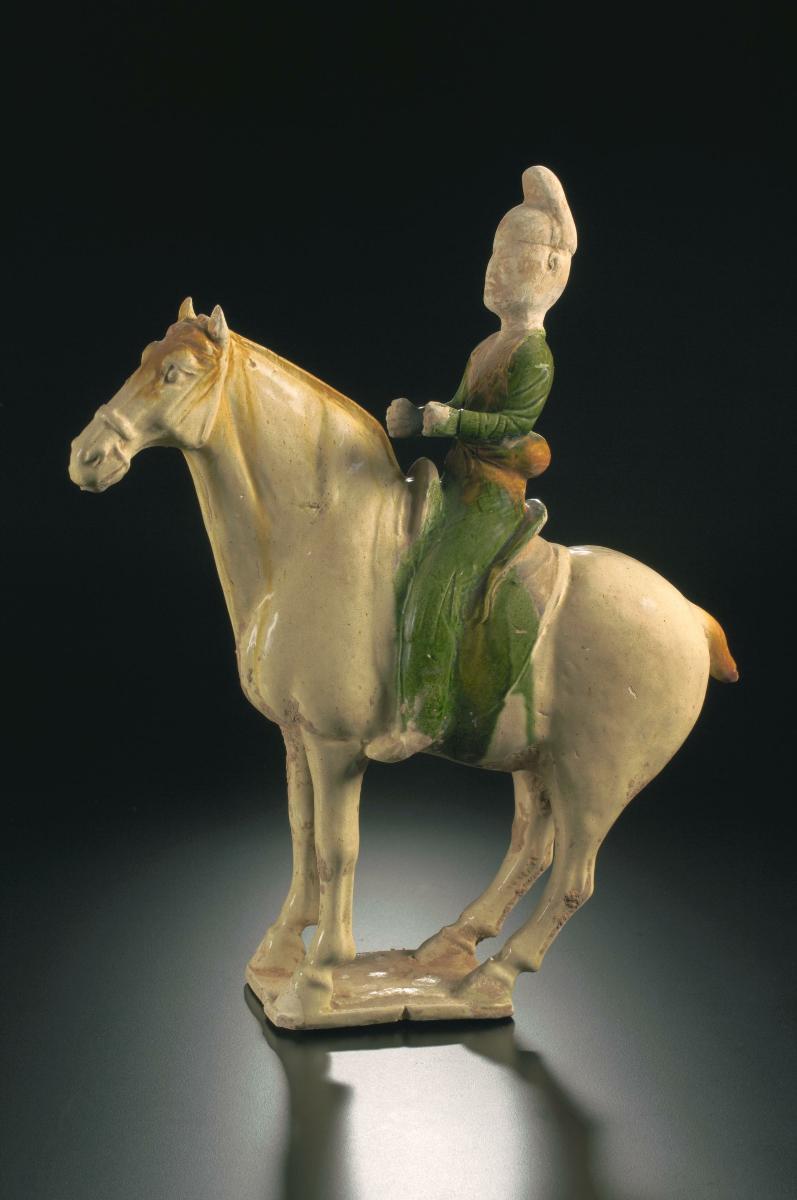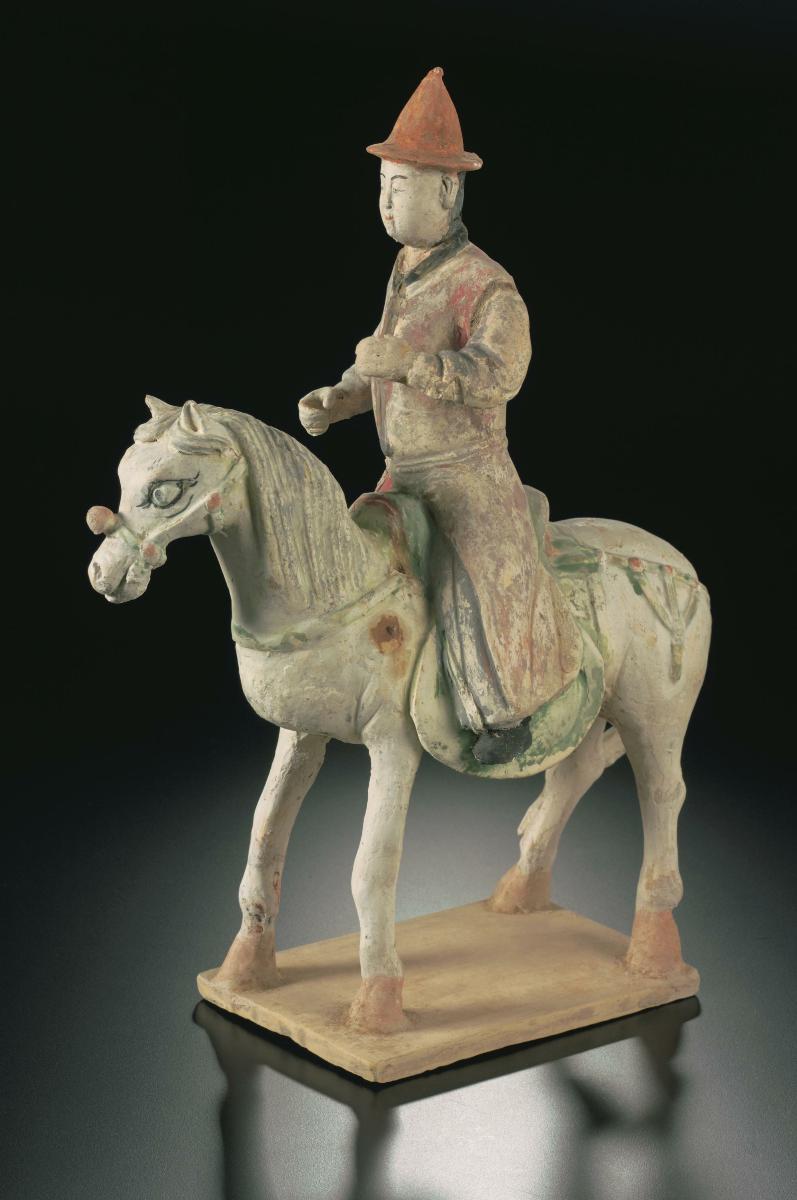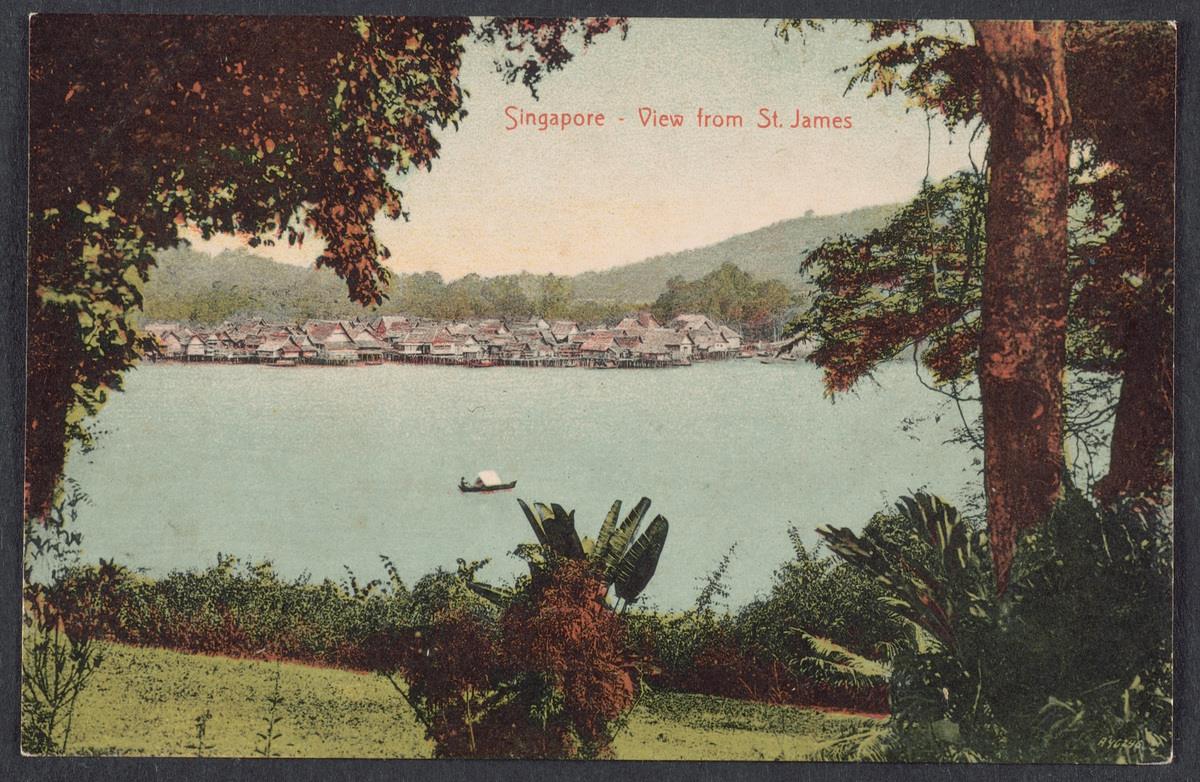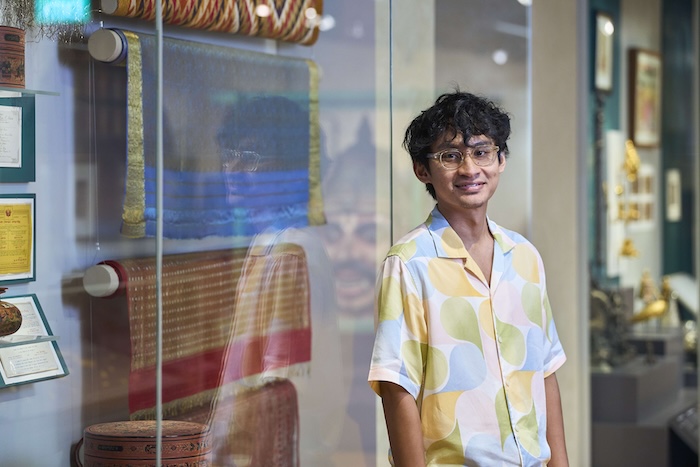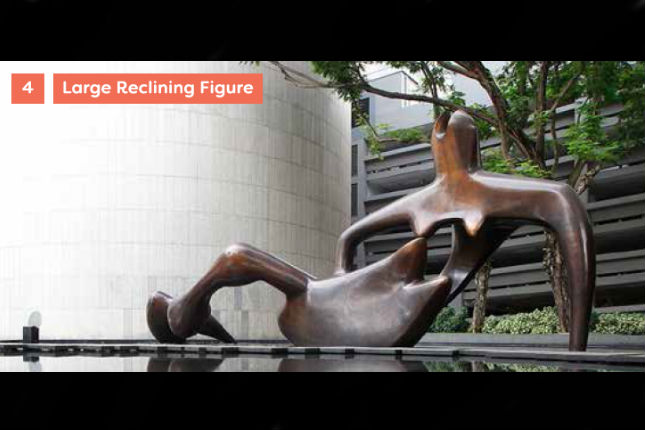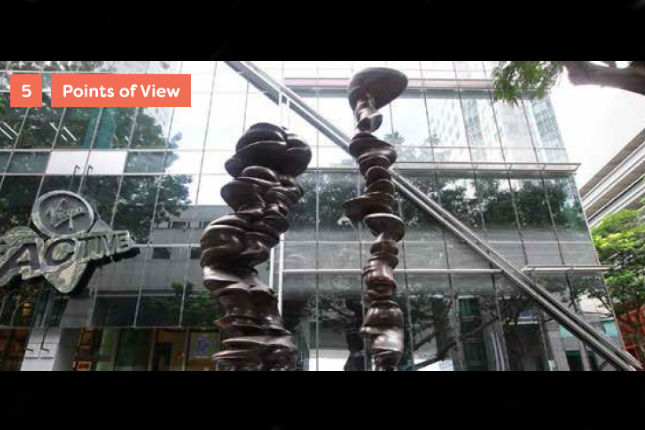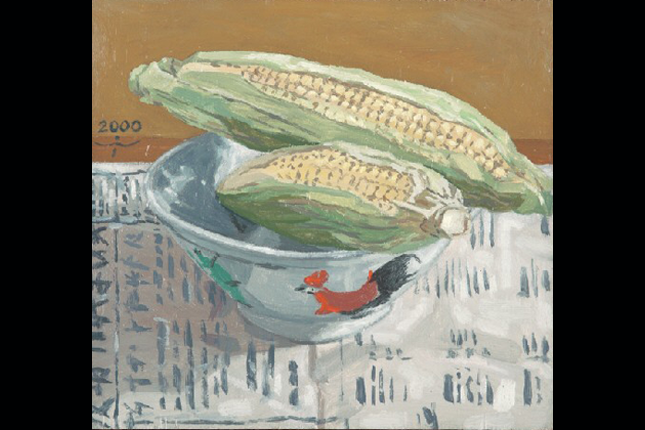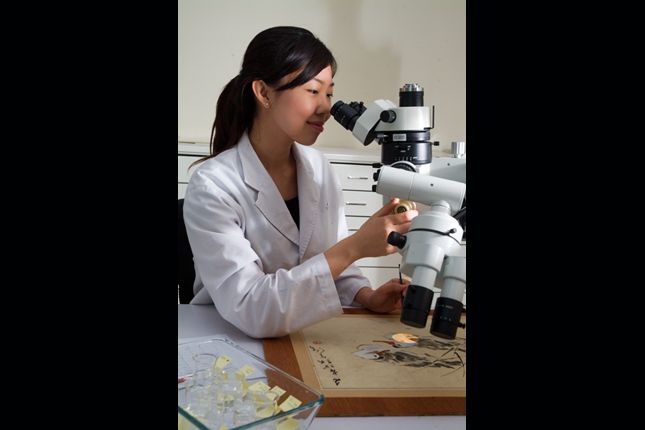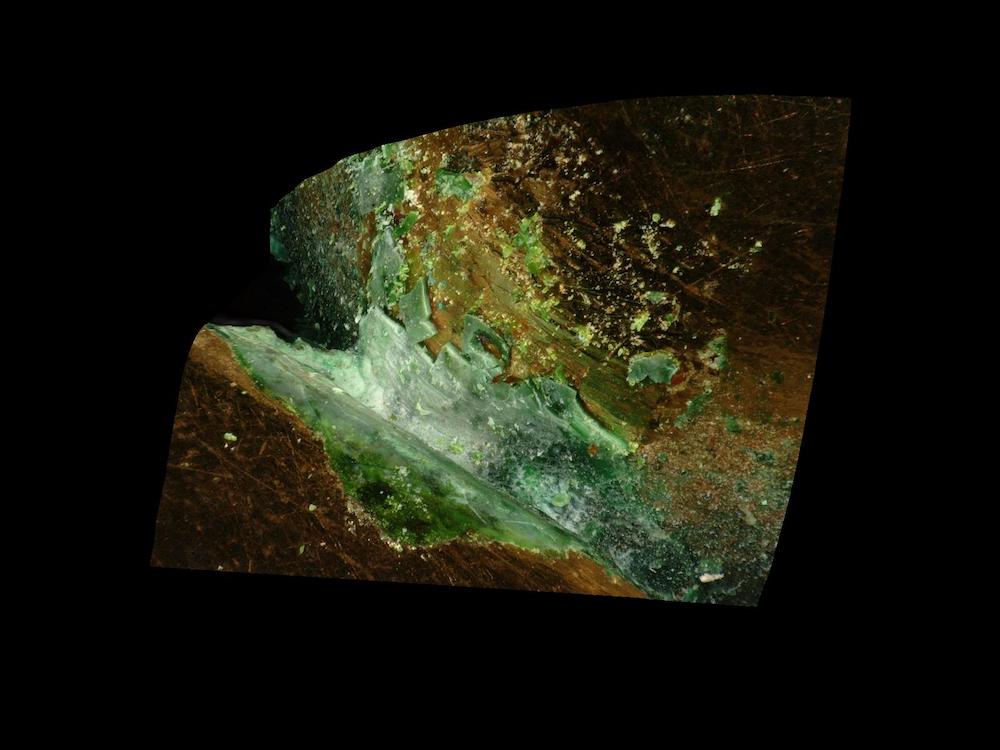This lead-glazed or 'sancai' (‘three colour’) rider on horse would have been part of a group of pottery tomb figures. The rider is most likely a musician as he holds a musical instrument in his hands. It is also interesting to note that cobalt blue was used to colour his robe when the more common three-colour palette of the Tang period is yellow, brown and green. The practice of using lead-glazed burial wares had already started during the Han dynasty (206 BCE-220 CE). This glaze technology further developed during the Tang dynasty (618-906) into ‘sancai’ glaze. This tradition of decoration continued into the Ming period. The importance of horses to the Chinese ruling class can be seen in the large numbers of pottery sculptures that have been found in Chinese tombs. Apart from military uses, the horse also played a central role in the long-distance trade over the Silk Road.




